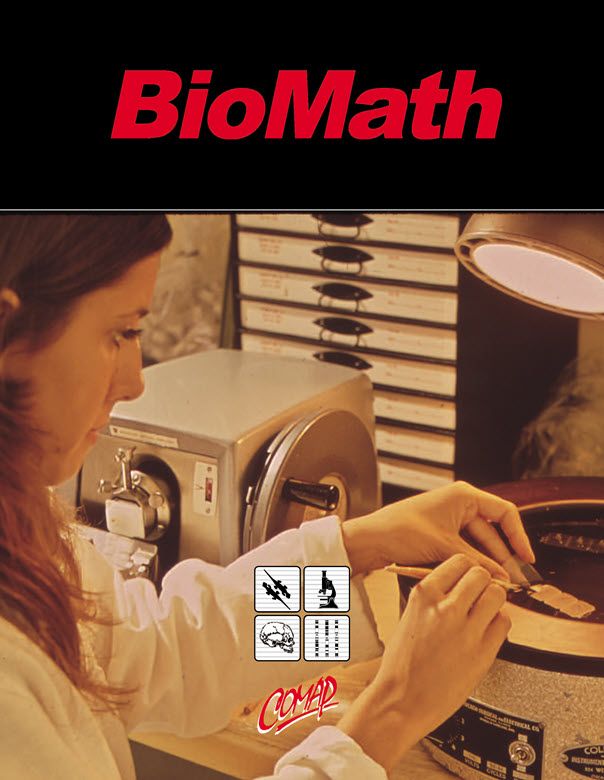Quorum Sensing : Organisms Communicating and Coordinating (Teacher)
Author: Published by COMAP, Inc. in conjunction with DIMACS, Rutgers University.
What is the BioMath Connection (BMC) Project?
BMC was a pioneering project linking biology and mathematics in the high schools. It provided an opportunity for high school teachers, writers, researchers, and others to get in on the ground floor of developing innovative classroom materials. The materials consist of 20 modules that can be flexibly adapted for use in a variety of courses at a variety of grade levels in both biology and mathematics. The project was run by DIMACS at Rutgers University in collaboration with the Consortium for Mathematics and its Applications (COMAP) and Colorado State University (CSU).
We live in an ever-changing world. Many people crave information about those changes. As a result, new means of communicating are continually evolving. People originally relied on word of mouth. With the invention of the printer, newspapers spread information to more people, more quickly. Later, telephones, television, cell phones and the Internet increased both the rate at which people could communicate and the number of people that the information reached. For many young people, it is hard to imagine a world without online social networks, cell phone texting, emails and television.
The cells in the human body and the cells in all living things also crave information. Cells are designed to both receive and send messages from their environment and others in their environment. From dusk to dawn, environmental parameters like temperature, pressure, and oxygen fluctuate in a periodic or arbitrary manner. Since the survival and well-being of organisms depends on how they respond to environmental change, it is important to be able to capture environmental cues and respond accordingly. For example, when the temperature drops, humans sense the temperature change and protect themselves by wearing warmer clothes. In addition, humans have developed means of communication, as simple as shouting to as complex as satellites, to alert as many people as possible of an upcoming event. Doing so has helped humans to survive life-threatening events, coordinate actions, and ultimately be more fit in uncertain environments.
Until recently, scientists thought that such means of communication and coordinated action was the characteristic of animals only. Recent discoveries, however, reveal that even the simplest organisms, bacteria, have a similar capacity to communicate with each other by secreting specialized, small molecules that are then received by other bacteria and interpreted accordingly. Bacteria are mainly using this form of communication to find out what the population density is in their neighborhood in order to decide whether or not to act, and, if they act, in what way. This ability is called quorum sensing, and it will be the focus of this unit.
Topics
Biology: This unit discusses bacterial growth and communication. Students will develop an understanding of the basic structure of a bacterium and how they grow through binary fission. The majority of the unit develops the idea of how, through chemical communication, a single-celled organism can gain, in a sense, multicellularity. Examples of this "multicellularity" are discussed and include the plaque on teeth, disease-causing bacteria, industrial examples, etc. To understand how the simplest of cells can achieve cooperation, a mathematical model is developed that takes into consideration the production and degradation of a communication molecule (the inducer), the production and degradation of a receptor molecule, and the production and degradation of the final product. For students that have studied DNA and protein production, this provides an example of how transcription and translation are regulated.
Mathematics: This unit presents a mathematical model that uses precalculus mathematics to explain the phenomenon of quorum sensing. After a review of exponential functions and an introduction to rate of change, students will be introduced to a set of equations that describe the rates of change for various components of cellular communication. Several of these equations express a rate of concentration change as a function of the concentration itself and will require students to solve linear equations to find desired concentrations. All of the equations employ the use of parameter values, provided to be representative of unique values for specific organisms. The development of a simulation of cellular concentrations over time will introduce students to iterative computations, particularly with numbers expressed in scientific notation. The notion of a density coefficient is also one of the mathematical concepts of the unit.
Prerequisites
Biology: A basic understanding of cell structure and functions along with the Central Dogma would be helpful, but is not necessary.
Mathematics: Exponents, scientific notation, function notation, solving linear equations, using a graphing calculator's symbolic-table-graph features, spreadsheet construction.
Length
This unit consists of 5 lessons and will take 4-6 class periods (45 minutes each) if the majority of the work is done during class. Length will vary depending on whether the activities and questions are each done individually, in groups or as a class. An extension provides further development of the mathematical model if time allows.

Mathematics Topics:
Application Areas:
Prerequisites:
You must have a Free Educator Membership or a paid Full Membership to download this resource.
If you're already a member, login here.